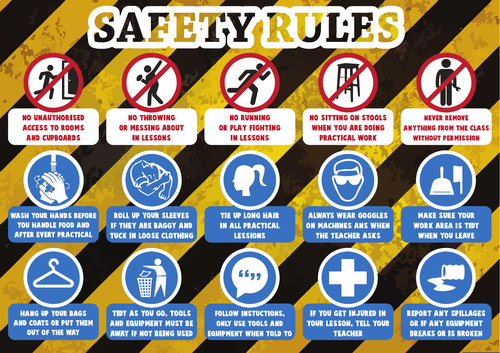Digital Media
Digital media in classrooms is not yet a requirement but
another tool for educators to have in their arsenal of potential options to get
information across. Digital pedagogy uses electronic elements to enhance the
experience of education and as Brian Croxall suggests, ICT in lessons
is to be integral, not just integrated.
I would agree mostly with that statement, other than like most of this
university degree, it appears a one size fits all for all subject strands
offered in the Education (Secondary) degree. For my chosen field of ITD
(Industrial Technology and Design) I still can only see how certain digital
application can assist in lessons. As I have mentioned in a prior blog (bit of
free advertising for my own blog, which isn’t great, but I thought I’d show how
the “shout out” can be done - https://jimithy.blogspot.com/) the application
possibilities are limited.
Over the past 3 or so weeks I have found how many possible
digital applications there are, and most likely only scratched the surface of
the sheer quantity that can be utilised. Using these forms can help assist the
way students learn and the way teachers put forward the information. Instead of
being responsible for the knowledge been given is now seen as a facilitator. Students
all learn differently and using digital media can assist covering the many
different ways. Kinaesthetic, Auditory and Visual are the three ways in which
individuals can take on and consume information and knowledge. Kinaesthetic is learning by doing and touching, Auditory is learning by hearing and listening, and Visual is learning by seeing and looking. Some students
can learn in all three, some will learn with a mix and others may learn with
just one of the three. These applications also make the subject matter accessible
and greatly assist to make it more engaging for all students.
Personally, I was always a visual learner. If I could view
someone doing something I would find it a great deal easier to complete that
given task. A few possibilities within my teachings and/or demonstrations will
be YouTube, TED talks, Google Images, BING (depending on your computer) and
heaven forbid another pandemic, Zoom. It must be noted, that when the teacher
facilitates information, it should be a requirement that they also demonstrate the
proper use of legal, safe and ethical protocols when it comes to digital
media and how it should be used. Eliminating plagiarism and copyrighting within
a secondary student’s work can assist them in how they use digital media within
education in the future. These are not so much for copyrighting or potential
lawsuits, but for future education and plagiarism.
Question - Considering the attention spans and engagement of Students, which of the below presentations would you consider to be hold the attention span of more?
A - Workshop Safety Rules Sign
B - Health and safety in workshops
Substitution – Teachers can demonstrate via Video or
images, a number of different methods or options of safety rather than have to
demonstrate or verbally discuss. This can lead to greater effectiveness of the
information.
Augmentation – Proof of students work via photos or
videos. These visuals can be captured on school iPads to minimise personal phone
“issues”.
Modification – The students can add annotations, edit
pictures, add labels and sound to visuals to demonstrate a deeper understanding.
Redefinition – Continual editing, addition and subtraction
to students own work after communicating with Teacher. Have the possibility to
gain a greater grade.
References –
Brian Croxall: What is Digital Pedagogy? - http://www.briancroxall.net/digitalpedagogy/what-is-digital-pedagogy/
The 3 Main Learning Styles - https://www.staffordglobal.org/articles-and-blogs/education-articles-and-blogs/3-main-learning-styles/
Workshop safety rules sign – https://www.tes.com/teaching-resource/safety-rules-for-workshop-food-room-science-11849036
Health and safety in workshops (Video) - https://www.youtube.com/watch?v=bhbru2LKtdg


Hi Jim,
ReplyDeleteI really liked reading your well explained blog post! I like your approach use of video for ITD. Your SAMR model was really easy to follow and pertains to ITD and other design areas. As a visual learner myself I believe safety videos are a great way to get the message across without boring the students.
Looking forward to reading next weeks post!
Kind regards,
David
Hey Jim,
ReplyDeleteThanks for your blog post! I agree, everyone learns in such different ways and I most definitely am a visual learner. To understand content, I always turn to viewing videos on YouTube before I even try to comprehend it from text.
In saying that, I would think A would keep my attention longer. It may come from experience watching safety videos - I have always found them very bland and the information incredibly obvious. So I think I'd prefer to skim through the poster before watching the entire video!
Hi Jim,
ReplyDeleteI thoroughly enjoyed your blog, lots of great information. I particularly liked the way that you aligned digital media with the different learning styles, I haven't seen this be done yet and found it very interesting. Have you considered then applying this to the SAMR model? I feel as though the cross examination of these topics would be a great expansion of the information in this blog, just a suggestion, food for thought! I also feel as though the question that you have posed is very interesting! Personally, I find 'A' more engaging, as I have a tendency to drift off during videos, whereas for the image I am forced to explore it in order to develop an understanding. This is something that I have seen in my prac with a year 11 class who were working on safety. If I put up an image and got them to diagnose, they were far more engaged than if I played a video. However, if I played the video and also started and stopped it to ask questions and create discussion, or gave them a set of questions to answer as they watched, attention would peak! Perhaps exploring some of these topics would further elevate the evaluation of images versus videos in your blog. Overall, a great read and very interesting!